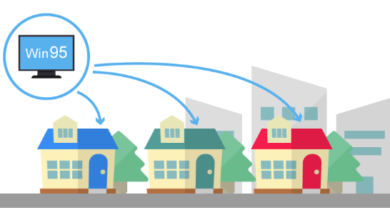5 Strategies based on neurolearning to facilitate your virtual courses

Neurolearning is based on understanding the learning processes of the human brain. The strategies to be developed in the knowledge acquisition stage will make your virtual courses more effective, providing your students with a better acquisition of the content to be taught.
Effective neurolearning strategies for a virtual course
All learning, whether simple or complex, happens spontaneously in the human being . However, teachers must help our students to apply better approaches so that they can develop their potential for autonomous learning.
In neurolearning, each level of learning is connected to past experiences, memories, and knowledge . This allows the creation of a complete network of information with well-established connections that allow the human being to delve into new concepts, clearly remembering previously acquired learning.
This process also improves different skills such as reasoning, decision making and problem solving, useful in the student’s training. To achieve deep “learning connections” you can apply some neurolearning strategies and make your virtual courses more effective:
Self-explanation:
This strategy is based on the idea of “the student teaches the student”. It consists of the students being the ones who explain through diagrams, concept maps or other types of resources, as if they were explaining the content to other classmates.
This activity reinforces the memory and organization of ideas, in addition to reinforcing the understanding of basic concepts to share them with others. It is important that the teacher make the necessary correction if there is confusion so that, if there is an “explanation error”, it does not remain correct.
Leveled Contents:
There are different levels of learning, so the content must be divided according to its function, motor tasks (exercises) or cognitive tasks (concepts).
You can distribute the content by blocks according to the level of difficulty and establish learning level checks, to “level up”, fully acquiring the content of the block, that is, until it is completed.
Evaluative collaboration:
This strategy consists of asking students to take tests or exams with their respective answers, either multiple choice or direct question.
This allows the student to consult the different resources seen in the course when preparing the evaluation: videos, diagrams, summaries, among others. In this way, the student internalizes the information, categorizes it and provides it with meaning, which contributes to their learning and improves their results.
Periodic Content Review:
This strategy consists of establishing periods of time for content review. This avoids the accumulation of content and establish sessions that allow to repair the information seen in the course.
To do this, it is feasible to establish exercises or activities where students need to consult the previous content seen in the course to respond. In this way, they will be constantly reviewing the content without waiting until the end of the course to review all the content.
Dynamic teaching:
As a teacher, you have a fundamental role in the learning of your students. Your method must adapt, avoiding the “rigidity of the system”, which often occurs, to the needs of the group. For this you can consider:
- Ask different questions, if you already know what answers the students should provide, ask the appropriate questions.
- Offer different learning proposals when possible so that each student commits by free choice to work or develop the proposed content
- Motivate that learning not only take place in the virtual course but that students are able to “take their new knowledge” in its context. They will have greater learning experiences that will strengthen their neural connections.
Teachers must develop in students skills with which they are able to appropriate new information and apply it later in their field of work. By applying neuro-learning strategies in a virtual course, it is also a means to train leadership in your students.



